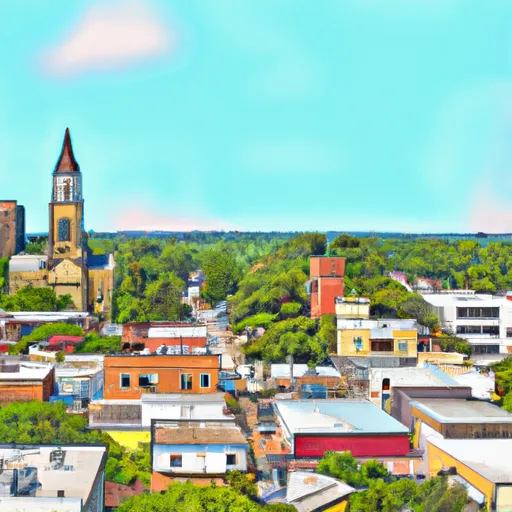-
 Snoflo Premium
Snoflo Premium
Get unlimited access to all our content
With no Ad interruptions! - Start Your Free Trial Login with existing account
Ludowici
Eden Index
Climate
8.1
•
Recreation
4.5
•
Community
1.4
•
Safeguard
5.2/10

Ludowici is a small town located in Long County, Georgia, known for its pleasant climate, abundant water resources, and diverse outdoor recreational opportunities. The climate in Ludowici is classified as humid subtropical, characterized by hot, humid summers and mild winters. The average high temperature in summer ranges from the mid-80s to low 90s Fahrenheit, while winter temperatures rarely drop below freezing.
Hydrologically, Ludowici benefits from its proximity to the Altamaha River and numerous creeks. These water bodies provide opportunities for various outdoor activities such as fishing, boating, and kayaking. The Altamaha River is particularly famous for its fishing, known for its abundance of bass, catfish, and bream.
Apart from water-based activities, Ludowici offers diverse outdoor recreation options. The town is surrounded by beautiful forests, making it ideal for hiking, camping, and wildlife observation. The nearby Fort Stewart Army Base also provides access to recreational facilities like golf courses and hunting grounds.
Overall, Ludowici's pleasant climate, access to water resources, and varied outdoor recreation opportunities make it a desirable destination for nature enthusiasts and anyone seeking an active lifestyle.
What is the Eden Index?
The Snoflo Eden Index serves as a comprehensive rating system for regions, evaluating their desirability through a holistic assessment of climate health, outdoor recreation opportunities, and natural disaster risk, acknowledging the profound impact of these factors on livability and well-being.
Climate Health Indicator (CHI): 8.1
Ludowici receives approximately
1218mm of rain per year,
with humidity levels near 81%
and air temperatures averaging around
20°C.
Ludowici has a plant hardyness factor of
8, meaning
plants and agriculture in this region tend to thrive here all year round.
By considering the ideal temperature range, reliable water supplies, clean air, and stable seasonal rain or snowpacks, the Climate Health Indicator (CHI) underscores the significance of a healthy climate as the foundation for quality living.
A healthy climate is paramount for ensuring a high quality of life and livability in a region, fostering both physical well-being and environmental harmony. This can be characterized by ideal temperatures, reliable access to water supplies, clean air, and consistent seasonal rain or snowpacks.
Weather Forecast
Streamflow Conditions
Altamaha
Area Rivers
Altamaha
Snowpack Depths
Altamaha
Reservoir Storage Capacity
Altamaha
Groundwater Levels
Recreational Opportunity Index (ROI): 4.5
The Recreational Opportunity Index (ROI) recognizes the value of outdoor recreational options, such as parks, hiking trails, camping sites, and fishing spots, while acknowledging that climate plays a pivotal role in ensuring the comfort and consistency of these experiences.
Access to outdoor recreational opportunities, encompassing activities such as parks, hiking, camping, and fishing, is crucial for overall well-being, and the climate plays a pivotal role in enabling and enhancing these experiences, ensuring that individuals can engage in nature-based activities comfortably and consistently.
Camping Areas
| Campground | Campsites | Reservations | Toilets | Showers | Elevation |
|---|---|---|---|---|---|
| Crooked River State Park | None | 14 ft | |||
| Sea Camp - Cumberland Island Natl Seashore | 16 | 6 ft | |||
| Blythe Island Regional Park | None | 11 ft | |||
| Eagle Hammock RV Military - Kings Bay NSB | None | 19 ft | |||
| Altamaha County Park | 43 | 12 ft | |||
| Magnolia Springs State Park | None | 185 ft | |||
| Holbrook Pond Military - Fort Stewart | None | 54 ft | |||
| Barrington County Park | None | 22 ft |
Catastrophe Safeguard Index (CSI):
The Catastrophe Safeguard Index (CSI) recognizes that natural disaster risk, encompassing floods, fires, hurricanes, and tornadoes, can drastically affect safety and the overall appeal of an area.
The level of natural disaster risk in a region significantly affects safety and the overall livability, with climate change amplifying these risks by potentially increasing the frequency and intensity of events like floods, fires, hurricanes, and tornadoes, thereby posing substantial challenges to community resilience and well-being.
Community Resilience Indicator (CRI): 1.4
The Community Resilience Indicator (CRI) recognizes that education, healthcare, and socioeconomics are crucial to the well-being of a region. The CRI acknowledges the profound impact of these elements on residents' overall quality of life. By evaluating educational resources, healthcare accessibility, and economic inclusivity, the index captures the essential aspects that contribute to a thriving community, fostering resident satisfaction, equity, and social cohesion.

